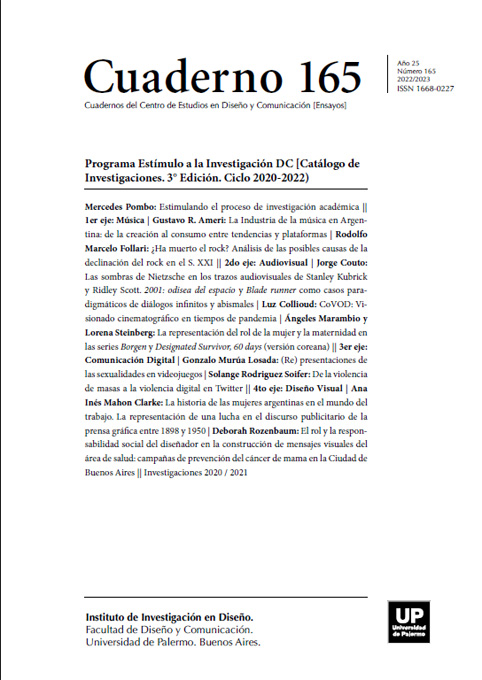Las sombras de Nietzsche en los trazos audiovisuales de Stanley Kubrick y Ridley Scott. 2001
Abstract
In the present work, we propose to dwell on how some powerful and central ideas of Nietzsche’s ideas influenced great iconic audiovisual productions in the history of cinema and art. For this investigation, we will focus on Stanley Kubrick’s 2001: A Space Odyssey and Ridley Scott’s Blade Runner. We will see how some of Nietzsche’s notions are embodied in these films and we will reflect and establish the “conversations in absence” that exist between the Nietzschean writings and the audiovisual discourses of Kubrick and Scott. It moves us to be able to reflect on the relationship between one of the most important thinkers in history and two of the most important audiovisual productions in cinema. Nietzsche with his tuning fork has moved or moved-with them and they with his productions have hit other directors and will hit the people who are to come.
References
Nietzsche, F. (1998). Sobre utilidad y perjuicio de la historia para la vida. Córdoba: Alción Editora.
Nietzsche, F. (2001). Aurora. Madrid: Edaf.
Nietzsche, F. (2007). Así habló Zaratustra. Buenos Aires: Centro Editor de Cultura.
Nietzsche, F. (2010). El origen de la tragedia. Buenos Aires: Ediciones del Libertador.
Nietzsche, F. (2011). Ecce homo. Buenos Aires: Agebe.
Nietzsche, F. (2013). Genealogía de la moral. Buenos Aires: Agebe.
Nietzsche, F. (2014). El ocaso de los ídolos. Buenos Aires: Gárgola.
Nietzsche, F. (2018). Contra la verdad: ensayos tempranos. Buenos Aires: Rara avis.
Nietzsche, F. (2019). La gaya ciencia. Madrid: Akal.
Los autores/as que publiquen en esta revista ceden los derechos de autor y de publicación a "Cuadernos del Centro de Estudios de Diseño y Comunicación", Aceptando el registro de su trabajo bajo una licencia de atribución de Creative Commons, que permite a terceros utilizar lo publicado siempre que de el crédito pertinente a los autores y a esta revista.


